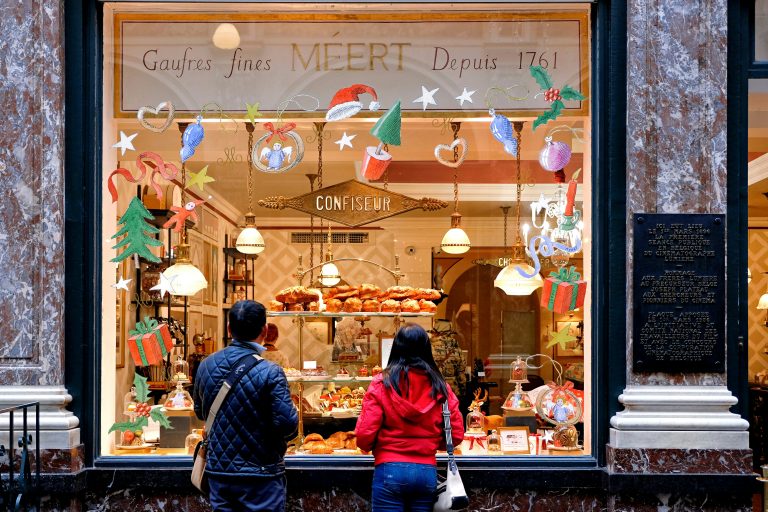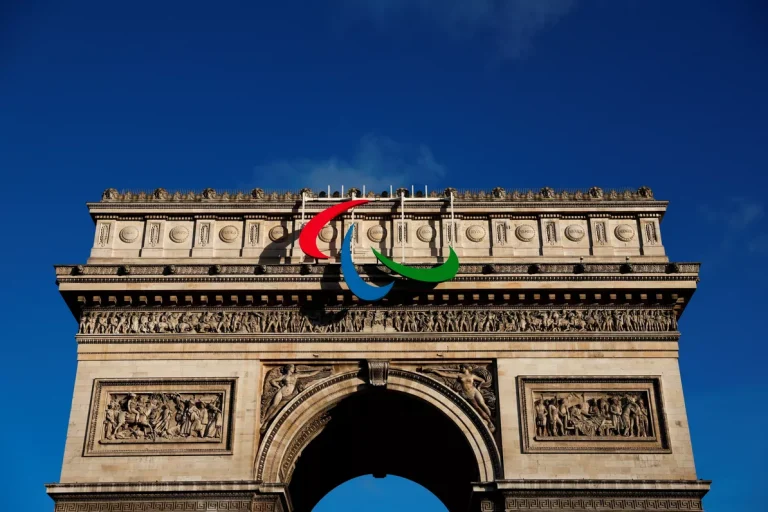This walk is perfect for the more adventurous amongst you!
✓ Camouflage clothing
✓ Binoculars (to watch the beavers),
✓ Bow and arrows (in case you need to fight off the advances of an overly forward suitor during a hunting party).
Like the trappers of yesteryear, are you ready to follow the trail through the history of the Bièvre, a river of many different facets? Although this river isn’t much to look at, flowing underneath Paris over a distance of 5km and only resurfacing at Cachan, its story is one that’s full of twists and turns. From when it rises near Versailles/Guyancourt until it flows into the Seine 33 km later, embark on a journey of discovery of a little slice of life that’s never boring and constantly on the go!

Starting point: Vélib’ station n°5115 Buffon – Jardin des Plantes
Finishing point: Vélib’ station n°42301 Gare Arcueil – Cachan
Suggested duration: 2 h 30
Around the Jardin des Plantes – Green beginnings
Starting point rue Buffon

Jardin des Plantes © Rog01 sur flickr
It may be buried, but that doesn’t mean it’s dead! Although it’s no longer possible to listen to the lapping of the Bièvre’s waters at ground level in Paris, you can still find out where it used to flow by following in the footsteps of famous people and exploring well-known places. Let’s start with one of Paris’ finest gardens, the Jardin des Plantes – a garden that owes its very existence to the Bièvre.
Many years ago, Louis XIII was looking for a location with a spring so he could create a botanical garden. Sited between the Bièvre and the rue Geoffroy Saint-Hilaire, the Royal Physic Garden (Jardin royal des plantes médicinales) was created in 1635. A few years later, free lessons in botany, chemistry and anatomy were given here.
The Bièvre had already been diverted from its original course, having been canalized during the Middle Ages. Lying beneath allée Becquerel (inside the Jardin des Plantes) was the canal des Victorins, which fed the watermill and irrigated the fields of the abbey of Saint-Victor, which was torn down to make way for the wine market following the French Revolution. Subsequently, the site returned to its intellectual roots, as it played host to the mathematicians and physicists on the Jussieu university campus (now known as the Pierre and Marie Curie campus), part of Paris’ main university specializing in the Sciences. The campus was named in honour of three renowned botanists, all brothers, responsible for numerous major contributions in this field, the most notable probably being the identification of the beneficial properties of the Cinchona tree, from which quinine is extracted. Quinine is well-known today as a treatment for malaria.
This is a little ironic, given that this area was very swampy! Fellow explorers, if you thought that the name ‘Bièvre’ came from the Latin “beber”- the beaver – you should know that the experts think it has a different etymology – brown – like that of the colour of the muddy stream near the banks of the Seine…
This theory, which is a little less glamorous, didn’t prevent the Bièvre from becoming a key ally of millers! Continue along the itinerary and in front of 28 rue Geoffroy-St-Hilaire, you’ll find a plaque commemorating the Coupeau mill which once stood on the spot, one of many mills in the area. The industrial age of the Bièvre was only just beginning!
Quartier Croulebarbe – From the water, industry sprang to life
Manufacture des Gobelins and Château de la Reine Blanche (Rue Berbier du Mets)

Château de la Reine Blanche ©couscouschocolat sur flickr
We’re not talking about an impish prankster or some sort of water sprite here, but the famed Gobelin family. The Gobelins were dyers going back many generations. Some said that it was the low chalk content of the waters of the Bièvre which first attracted Jehan Gobelin to this spot in 1450. Later, Henri IV brought Flemish tapestry makers here and several workshops set up shop. However, it wasn’t until 1662, when Colbert effectively brought the factory under the King’s control (as was already the case of the Manufacture des Meubles de la Couronne, the royal furniture factory), that the Manufacture des Gobelins as we know it today was born: (3 bis rue des Gobelins and 42 Av. des Gobelins). On Rue Barbiers-du-Mets, you can still see the Gobelin family’s former home, which now goes by the name of the “Château de la Reine Blanche” (the White Queen’s Château).
A bonus side trip if you’re not in a hurry:
If you have time to make a short detour, head for the intersection of rue Emile Deslandres and rue Berbiers du Mets, where you’ll be able to admire a mural created in 2013 by the street artist known as Seth. It’s a poetic design harking back to a time when the Bièvre was in full flow here. It shows a little girl who seems to be borne upon a river of drab umbrellas. Seen from behind, she is watching shoals of colourful fish, perhaps a tribute by the artist to the two very different sides of the Bièvre?
Île aux Singes and the moulin Croulebarbe mill

Île aux singes plaque commémorative ©Monceau sur flickr
Other dyers followed in the footsteps of the Gobelin family, then tanners and tawers, who also came from the right bank of the river. It wasn’t long before a turf war broke out between these two activities, which were absolutely poles apart. Dyers needed clean water to fix colours. The other occupations used the river to clean animal hides, thus polluting the water…
The Bièvre became an open-air sewer to such an extent that its two arms were differentiated by the speed of their flow! One side was the “bras vif” (the fast or ‘live’ arm), punctuated by watermills, having a faster flow, to the detriment of the other arm, which became a “bras mort” (dead arm). Between the two there was a small island called ‘Île aux singes’ (island of the monkeys), which was home to open-air cafés. The location was so dirty that the city of Paris had to decontaminate it after having channelled the Bièvre underground. A park was created on the site, now known as square René Le Gall. A plaque commemorating the old bridge to the island may be seen at the intersection between rue Berbier du Mets and rue de Croulebarbe.
The Croulebarbe watermill, which used to be sited at the entrance to the present-day square, powered the bellows of a nearby foundry. As such, it could be said that it was the Bièvre that made Paris tick!
Glacière
Let’s get back on the trail of the Bièvre – one that’s always full of surprises – and head down to the Glacière district, with its eponymous street and underground station. This is where the ‘bras mort’ of the river lost itself in a stagnant network of channels which froze over readily in the wintertime. It was perfect for ice traders, who would break the surface ice and store it in wells before selling it to fishmongers and sellers of cold drinks. The latter would use the ice in the refreshments they offered to thirsty gentlemen and women in the gardens during the summer.
Butte aux Cailles and Poterne des Peupliers – Village life by the waters’ edge
Place Paul Verlaine

Piscine de la Butte-aux-Cailles ©Fred Romero sur flickr
That’s enough with the aristocracy and the bourgeoisie for the time being. We’re going to leave the city centre even further behind us as we follow the course of the Bièvre beyond the city limits. This mirrors the growth of industry as it tried to stay ahead of a succession of city walls to avoid paying taxes!
As we cross Boulevard Blanqui, we pass Paris city limits as they were up to 1860! Monsieur Cailles had got it right when he bought the hill that bears his name in 1543, which rises to a culminating point of 28 metres above the Bièvre. Limestone quarries, mills, laundries and tanneries took advantage of the exposed position and easy access to the river. It also became a stronghold for rag-and-bone-men. This hard-working community were some distance from the Seine and, although they lived beside a river, they sadly lacked water that was fit to drink. There were numerous epidemics which could be traced back to the unhealthy waters of the river. Baron Haussmann, on a mission to make Paris a healthier place, was determined to provide these areas with safer water. Thus began the saga of the Butte aux Cailles’ artesian well on place Paul Verlaine. For the water to start flowing out of the well, first a 580-metre deep shaft had to be dug – then it became a waiting game – one that lasted 37 years! A little further along, go down rue du Moulin-des-Prés and then onto rue du Moulinet, and you can admire the “chevet[1]” of the Art Deco swimming pool which was fed by this well. It’s something of a temple to water itself!
Unfortunately, it was already too late for the Bièvre to benefit from this new source of water, as work had already begun on channelling it underground.
Square des Peupliers

Square des Peupliers ©Mbzt
If we continue a little further, we’ll reach the site of another watermill on the Bièvre, the Moulin des Prés. Although the mill has long since gone, the square des Peupliers carries echoes of the now vanished river (68 and 72 rue du Moulin-des-Prés). When the river was forced underground, the new plot could not offer strong enough foundations for multi-storey buildings. As a result, in 1926, as a tribute to the trees which grew beside the Bièvre in this place, the miniature city park of the Square des Peupliers (Poplars Square) emerged from the ground. Or should we say, from the water? Regardless, it was the first sign heralding a new lease of life for the Bièvre…
Go along rue des Peupliers until you reach the old city limits. Go through the Poterne des Peupliers, where the Bièvre once flowed through an arch in the Thiers-era city walls!
Gentilly and Arcueil – Walking on water
Allée René Cassin, Gentilly

Église Saint-Saturnin de Gentilly ©Poulpy
As if to acknowledge the now vanished river, the town of Gentilly has retraced its course, complete with fake bridges, near the church on allée René Cassin. Just close your eyes and you’ll be able to conjure up images of village life from days gone by with the ringing of the bells of Saint-Saturnin church, the gently burbling stream nearby, the riverbank stretching away to the horizon, the washerwomen’s laundry hanging out to dry, tanneries and cobbler’s shops and more. You could really believe you’d been whisked back in time!
Parc départemental du Coteau and Maison de l’environnement du Val de Bièvre – 66 Rue de la Division du Général Leclerc, 94110 Arcueil
The plans to give a new lease of life to the Bièvre in these two towns looks set to provide a real boost for the natural world and a more pleasant setting in which to live. These plans are taking shape in a very concrete way in the parc départemental du Coteau, where the river, which is currently being cleaned up, should make its reappearance above ground level again by the end of 2021.
A bonus for nature lovers:
Head to the Maison de l’environnement du Val de Bièvre (66 Rue de la Division du Général Leclerc, 94110 Arcueil), where you will find all the information you need about the wildlife and plants that you will soon be able to spot here!
Rue Cauchy – laundries and aqueducts
Remnants of the Golden Age of our much-loved river, there are still a few laundries to be found on the even side of the street on rue Cauchy. Nowadays they’re being gradually replaced by apartments and small private yards festooned with pretty floral displays.
The street turns into rue Emile Raspail which eventually leads to a magnificent aqueduct where a certain Arcolius (Arcueil) lamented the loss of his love, who had been turned into a stream – not just any stream, but the Bièvre! Legend has it that the young man fell head over heels in love with the beautiful Gentiliane (Gentilly) when he came across her as he was out hunting. In fact, it was to extricate her from his overly insistent advances that the goddess Diana turned the young nymph of the hunt into a fast-flowing stream. Arcolius erected a wonderful series of arches to commemorate his passion for his beloved, and from these the famous aqueduct was born. Although the original construction which gave rise to the legend is long gone, you now have two aqueducts for the price of one! The 19th century Aqueduc de la Vanne, which connects to the Montsouris reservoir, is built on top of the Médicis aqueduct (1613) which supplied water to the Jardin du Luxembourg gardens. In this way, a little bit of Paris ends up in the suburbs, and the suburbs flow into Paris!
Cachan – The Bièvre reborn!

« Cachan Bièvre en eau » ©VVVCFFrance
Finally it makes an appearance – the mysterious river is now visible to all as it goes on its sinuous way. You can follow its progress by travelling along its banks along the “Rives de la Bièvre“ pathway on Promenade de la Bièvre! Let yourself drift away to the cheerful lapping of a little river in the middle of the city and try to picture it springing back to life and flowing once again between Versailles and Paris – something that some people still dream of – forming an attractive link between Paris and its suburbs in the shape of a pretty, meandering river that is enigmatic and charming in equal measure.
If you want to, you can return to Paris using the RER suburban rail service, leaving your Vélib’ at Vélib station n°42301 Gare Arcueil – Cachan.
[1] A lead edging applied to box gutters which prevented water leakage.



